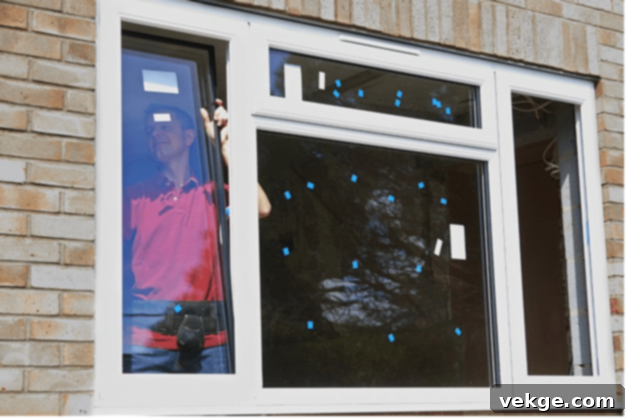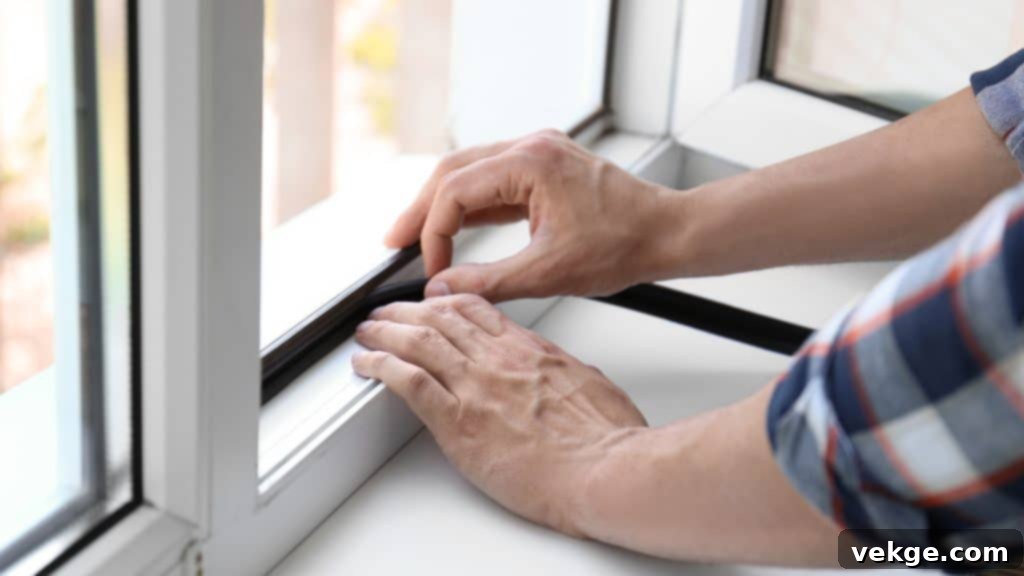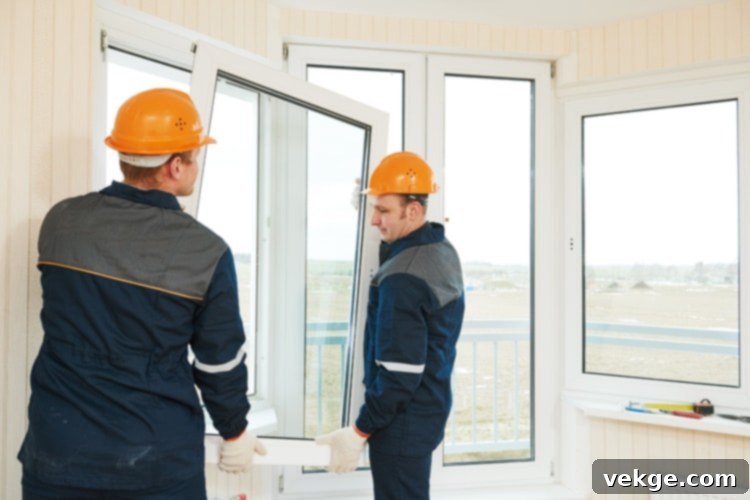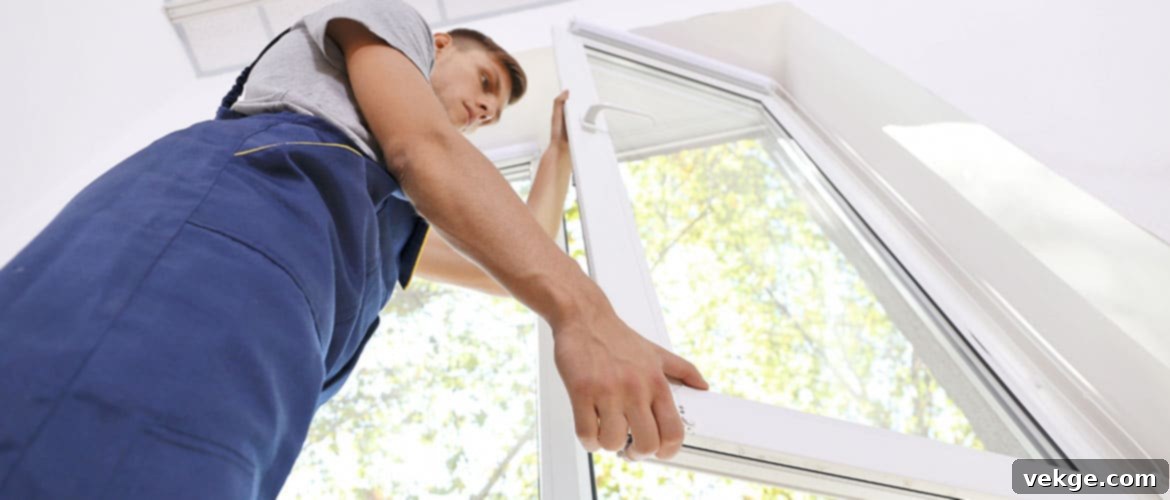Mastering Glass Installation: Troubleshooting Common Challenges for Flawless Results
Glass installation is far more than merely placing a pane of glass into a frame; it’s a intricate blend of artistic vision and engineering precision. Whether it’s crafting expansive windows for a modern home, designing a striking commercial facade, or integrating bespoke interior glass features, the ultimate success of an installation hinges on its clarity, enduring durability, and captivating aesthetic appeal. Achieving these high standards demands meticulous attention to detail at every phase of the project, from initial design to the final touches.
However, even the most thoroughly planned glass installation projects can encounter unexpected hurdles. From the inherent fragility of the material itself to the complexities of achieving a perfect fit within unique or historic architectural frameworks, glass professionals frequently need to diagnose and resolve issues in real-time. This comprehensive guide delves into the most common challenges faced during glass installation and provides practical, expert-backed solutions to ensure a seamless, flawless finish that meets and exceeds client expectations.
Understanding the Unique Properties of Glass: Material Handling & Selection

Glass is a remarkable material, simultaneously exhibiting incredible strength and profound fragility. This unique combination presents the very first, and often most critical, challenge in any glass installation project. Mishandling can lead to costly breakages, hairline cracks that compromise integrity, or subtle surface damage that detracts from its appearance. Therefore, a deep understanding of glass properties and meticulous handling protocols are paramount.
Proper handling and transportation are not just important; they are absolutely critical. Glass panels, especially large or custom-fabricated pieces, must be moved by highly trained professionals utilizing specialized equipment. This includes industrial-grade suction cups, lifting slings, and transport racks designed to support the glass evenly and prevent localized stress points that can lead to fractures. Furthermore, securing glass during transit is vital to avoid shifting, impacts, and vibrations that can cause damage. On-site, clear pathways must be established, and the installation area should be free of debris and obstructions to minimize risks.
Beyond handling, selecting the correct type of glass for a specific application is equally crucial. Different glass types offer varied performance characteristics:
- Annealed Glass: Standard glass, but shatters into sharp shards upon breakage, making it unsuitable for high-risk areas.
- Tempered Glass: Heat-treated for significantly greater strength (typically 4-5 times stronger than annealed glass) and shatters into small, relatively harmless blunt pieces when broken. It’s ideal for shower doors, tabletops, and areas prone to high wind loads or potential impact.
- Laminated Glass: Consists of two or more panes of glass bonded together with an interlayer (often PVB). When broken, the interlayer holds the fragments together, reducing the risk of injury and maintaining the structural integrity of the opening. This is essential for safety in overhead glazing, skylights, and security applications.
- Insulated Glass Units (IGUs): Comprising multiple panes separated by a sealed air or gas-filled space, IGUs significantly improve thermal performance and noise reduction.
Considering the project’s specific requirements – such as safety, security, energy efficiency, and acoustic performance – allows for an informed material selection that mitigates future problems and enhances the longevity and functionality of the installation.
The Precision Imperative: Accurate Measurement and Flawless Fit
Perhaps the most critical and unforgiving aspect of any glass installation is ensuring absolute measurement accuracy. Even a minuscule miscalculation can cascade into a myriad of issues: unsightly gaps that compromise aesthetics, significant water or air leaks that lead to structural damage and energy loss, or the need for expensive and time-consuming adjustments, re-fabrication, or even complete re-ordering of glass panels. In the world of glass, “close enough” is never acceptable.
To overcome this challenge, modern glass installers leverage cutting-edge technology. Traditional tape measures are often supplemented or replaced by advanced laser measurement tools, 3D scanning devices, and digital templates. These technologies provide unparalleled accuracy, capturing precise dimensions, angles, and even accounting for the minutest architectural nuances, such as slight wall undulations or non-square openings. The data collected can then be directly fed into fabrication machinery, ensuring that the glass is cut to exact specifications.
Furthermore, an often-overlooked but vital consideration, especially for exterior installations or large glass panels, is the natural expansion and contraction of materials due to temperature fluctuations. Glass, metal frames, and surrounding building materials all react differently to heat and cold. Failing to account for this thermal movement can lead to excessive stress on the glass, resulting in cracking, buckling, or even catastrophic failure. Professional installers ensure adequate space, known as “expansion joints” or “clearance,” is provided around the glass within its frame, allowing for this movement without compromising the integrity of the installation. This preventative measure is fundamental to the long-term stability and safety of the glass system.
Navigating Structural Complexities: Custom Approaches to Glass Integration
Every construction project, whether a new build or a renovation, presents its own set of unique structural challenges. These can range from subtly uneven wall surfaces and floors to dramatically unconventional architectural designs featuring curves, angles, or cantilevers. Such structural irregularities demand a highly customized approach to glass installation, moving beyond standard methods to ensure both aesthetic integration and structural integrity.
One effective solution for accommodating irregularities is the deployment of adjustable framing systems. These innovative systems incorporate shims, adjustable anchors, or flexible components that allow installers to precisely level and plumb the frame, compensating for deviations in the surrounding structure. This ensures the glass sits perfectly square and plumb, regardless of the underlying wall or floor condition, thus preventing stresses on the glass and achieving a visually consistent finish.
For architectural designs that truly push the boundaries of conventional glass applications – such as large-scale curtain walls, structural glass fins, glass floors, or highly complex bespoke installations – the expertise of structural engineers becomes indispensable. Collaborating with engineers from the early design stages ensures that the proposed glass installation is not only visually stunning but also inherently safe, compliant with all relevant building codes, and capable of withstanding anticipated loads (e.g., wind, seismic activity, dead loads). Their input guides the selection of appropriate glass types, framing materials, anchoring systems, and connection details, transforming ambitious concepts into secure, real-world structures. This collaborative approach minimizes risks, prevents costly redesigns, and guarantees the long-term performance and safety of the glass system.
Fortifying Against the Elements: Ensuring Weatherproofing and Thermal Insulation

For any glass installation, particularly those in exterior applications like windows, doors, and facades, the ability to withstand harsh environmental elements while maintaining interior comfort is non-negotiable. A poorly installed glass unit can quickly lead to an array of detrimental issues: persistent water leaks that cause mold, rot, and structural damage; uncomfortable drafts that diminish indoor air quality; and significant energy loss, resulting in higher utility bills and a larger carbon footprint.
Professionals meticulously address these concerns by ensuring superior sealing and insulation around every glass panel. This involves a multi-layered approach:
- High-Quality Sealants: The use of durable, weather-resistant sealants, such as silicone-based compounds or specialized structural glazing tapes, is critical. These materials must be applied correctly, often with backer rods to control sealant depth and ensure proper adhesion to both the glass and the frame. The sealant forms a continuous barrier against water and air infiltration.
- Proper Gasketing: EPDM or silicone gaskets are often incorporated into the framing system to create a compression seal around the glass, offering another layer of defense against moisture and air.
- Thermal Breaks: In framing systems, especially aluminum, thermal breaks are essential. These are low-conductive materials inserted into the frame profile to interrupt the flow of heat (or cold) from the exterior to the interior. Without thermal breaks, the metal frame can act as a bridge for temperature transfer, leading to condensation on the interior glass surface and significant energy inefficiency.
- Insulated Glass Units (IGUs): As mentioned previously, multi-pane glass units with inert gas (like argon) in the gap dramatically reduce heat transfer and improve insulation, contributing significantly to a building’s energy performance.
By diligently implementing these weatherproofing and insulation strategies, installers create a robust, weather-tight envelope that keeps the interior comfortable, protects the building structure, and maximizes energy efficiency for years to come.
Achieving Visual Harmony: Ensuring Aesthetic Consistency in Glass Projects
In many architectural and design projects, glass is chosen not only for its functional properties but also for its profound aesthetic impact. Achieving absolute aesthetic consistency, particularly in large-scale installations or those involving multiple glass panels, can be surprisingly challenging. Variations in subtle attributes like glass color, transparency, reflectivity, or even the tint from different production batches can detract significantly from the project’s overall visual appeal, creating an inconsistent or disjointed look.
To proactively avoid such inconsistencies, it is vital to implement rigorous sourcing and quality control measures. Professional glass suppliers and installers will emphasize sourcing all glass panels for a single project from the same production batch or, at the very least, from the same manufacturer with stringent quality controls. This minimizes the risk of slight variations that become noticeable once installed. Clear communication of the precise aesthetic requirements – including desired tint, clarity, reflectivity, and edge finishes – must be established with the manufacturer and supplier from the project’s outset.
Furthermore, the aesthetic consistency extends beyond the glass itself to its complementary components. Close attention to the selection, finish, and installation of framing materials, hardware (such as hinges, handles, and standoffs), and sealants is crucial. These elements must not only provide structural support but also harmonize with the glass and the broader architectural design. Consistent alignment of panels, uniform spacing, and a meticulous finish on all exposed components contribute significantly to a cohesive, professional, and visually stunning installation that truly embodies the intended design vision.
Prioritizing Safety and Compliance: A Non-Negotiable Aspect
Safety must always reign supreme in every phase of glass installation, encompassing both the immediate well-being of the installation team and the long-term safety of the building’s occupants. Overlooking safety measures or failing to comply with regulations can lead to severe accidents, costly legal repercussions, and a damaged reputation.
Ensuring that the chosen glass meets or exceeds all required safety standards and is appropriate for its intended use is paramount. This often involves specific types of safety glazing:
- Tempered Glass: As discussed, its ability to break into small, blunt fragments makes it a primary choice for high-traffic areas, shower enclosures, and doors where impact is a possibility.
- Laminated Glass: Critical for applications where retaining glass in the opening after breakage is vital for safety (e.g., skylights, overhead glazing, balustrades, and security windows).
- Heat-Strengthened Glass: Offers intermediate strength between annealed and tempered glass, and breaks into larger fragments than tempered, but is more resistant to thermal stress.
Beyond material selection, adherence to local, national, and international building codes and regulations is non-negotiable. These codes dictate minimum requirements for glass thickness, type, and installation methods based on factors like wind load, seismic activity, fire ratings, and human impact resistance. Compliance also extends to accessibility standards, ensuring glass doors and features are safe and usable for everyone. Professional installers are thoroughly versed in these codes and ensure that every aspect of the installation meets legal and safety obligations. This proactive approach not only prevents accidents but also provides peace of mind for clients and occupants alike.
The Foundation of Success: Collaboration and Transparent Communication

Ultimately, the most effective troubleshooting and seamless execution in any complex glass installation project boils down to one fundamental principle: robust collaboration and transparent communication among all involved parties. From the visionary architects and detailed designers to the skilled installation technicians and the discerning clients, maintaining open and continuous lines of communication is the most powerful tool for preempting and swiftly resolving potential challenges.
Early and regular meetings, consistent updates, and comprehensive documentation serve as critical mechanisms for success. These platforms allow all stakeholders to:
- Clarify Scope and Expectations: Ensure everyone is aligned on design intent, material choices, timelines, and budget.
- Identify Potential Issues Early: Catching discrepancies in drawings, structural conflicts, or logistical challenges during the planning stages or early installation can prevent them from escalating into major, costly problems later on.
- Facilitate Rapid Decision-Making: When issues arise, clear communication channels enable quick discussions, consensus building, and efficient approval of necessary adjustments.
- Foster Accountability: Defined roles and responsibilities, communicated clearly, ensure that tasks are performed diligently and effectively.
By fostering a culture of proactive communication and mutual respect, project teams can navigate complexities with agility, build trust, and ensure that every glass installation progresses smoothly towards a successful and satisfying outcome for everyone involved.
Conclusion: Achieving Flawless Glass Installations Through Expertise and Diligence
Troubleshooting common challenges in glass installation is a multifaceted endeavor that demands a synergistic combination of technical expertise, meticulous planning, advanced tools, and crystal-clear communication. The journey from conceptual design to a perfectly installed glass feature is fraught with potential obstacles, but each can be effectively overcome with the right approach.
By thoroughly understanding the unique properties of glass and employing best practices for material handling, ensuring pinpoint accurate measurements and fit, skillfully addressing diverse structural challenges, guaranteeing superior weatherproofing and thermal insulation, maintaining unwavering aesthetic consistency, and rigorously prioritizing safety and regulatory compliance, professionals can confidently navigate the inherent complexities of glass installation. Furthermore, cultivating an environment of robust collaboration and open communication among all project stakeholders acts as the bedrock for preventing and resolving issues efficiently.
The ultimate reward for this diligence is not just stunning and durable glass installations that enhance the beauty and functionality of any space. It’s the profound satisfaction of clients who can fully appreciate the clarity, security, and benefits of their exquisitely crafted glass features, knowing they are built to last for many years to come.
